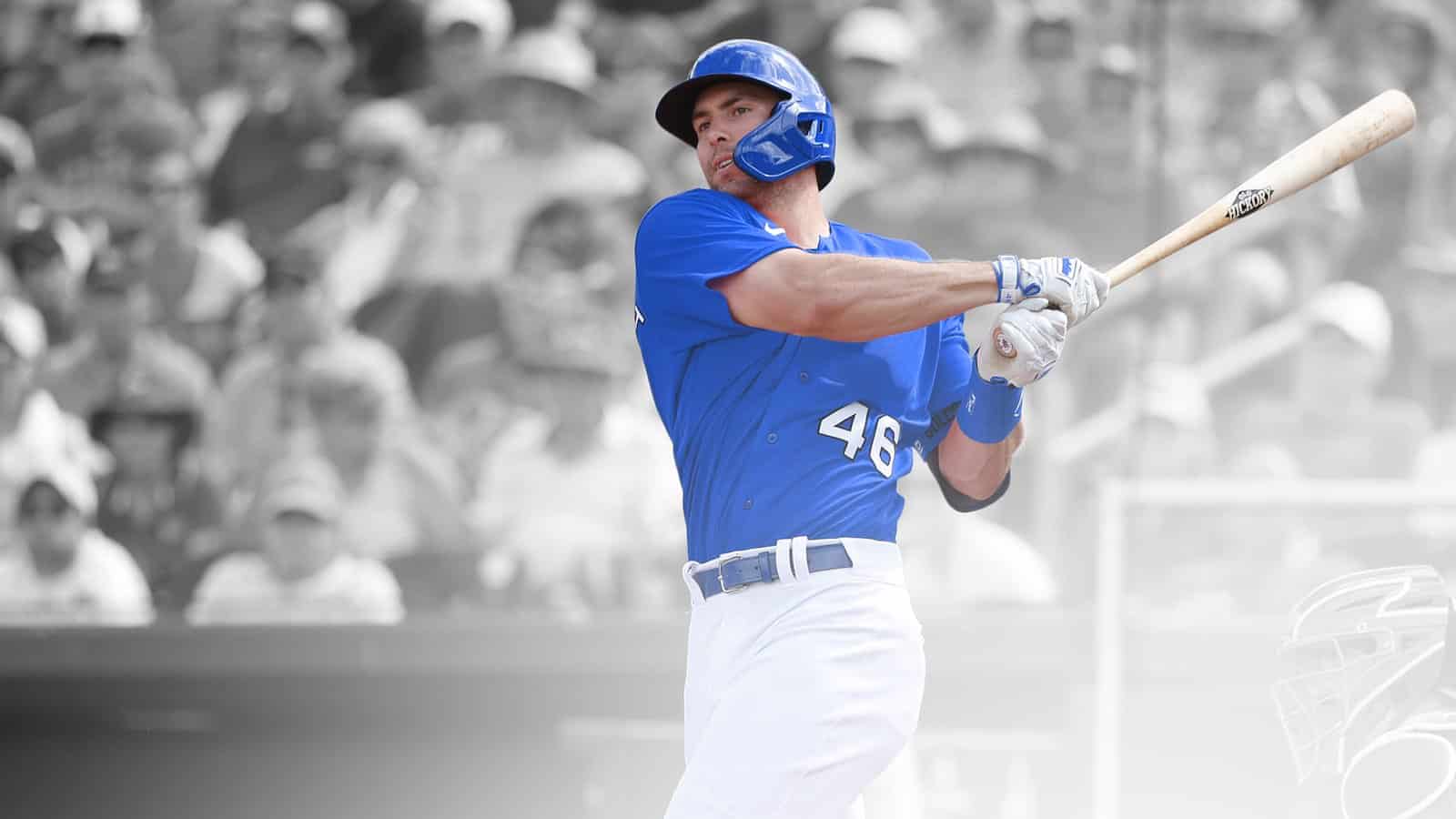For the last couple of years, there’s been a narrative forming that Paul Goldschmidt’s a slow starter, and that at the beginning of the season, he’s not producing. At best, that’s a half truth. In 2018, after two months, Goldschmidt was hitting .209/.326/.393 with a wRC+ of 96. While that’s certainly not the line that we’ve come to expect from the 6x All-Star, he was essentially league average to start the season. But as the year progressed, we saw the player we’ve come to know, as he ended the season hitting .290/.389/.533, with a wRC+ of 146.
In 2019, Goldschmidt got off to a much better start, but once the media has sunk its teeth into a narrative, true or not, it can be nearly impossible to shake. New articles and think pieces about needing to “address the elephant in the room” permeated social media. Everyone was quick to warn their readers that we were witnessing the beginning of the end for Goldschmidt. But after the first two months of the season, he was hitting .274/.363/.447 with a wRC+ of 116, far exceeding what had triggered so many articles about his imminent decline just a year earlier.
As we entered the 2020 season, the same articles returned, this time openly asking the question, “what version of Goldschmidt will the Cardinals be getting”? There wasn’t much optimism amongst the different sports outlets, and writers warned against any expectations around a resurgence. Goldschmidt was simply the next victim to the sands of time, and his trip down the aging curve was going to be a rough ride. But once the season finally got underway, he again proved that the predictions of his decline were off-base.
Five games into the season, Goldschmidt hit .316/.381/.474 with a wRC+ of 135. But then it all came to a crashing halt due to an outbreak of Covid-19, and the Cardinals were shut down. While they didn’t know it at the time, the players and coaches would be quarantined in their respective hotel rooms for the next 15 days while the rest of the league (except the Marlins) carried on. Beyond the implications of the virus itself, this stoppage of play could have been disastrous for Goldschmidt.
During the first shutdown, everyone was equally disadvantaged. Pitchers weren’t able to work with their battery mates, and hitters weren’t able to get the live reps they needed to get up-to-speed on in-game pitching conditions. But now, the Cardinals were on the outside looking in. As hitters across the league grew more comfortable at the plate with every pitch they saw, the Cardinals were forced to sit in their hotel rooms and watch from a distance. Without the ability to duck down into a batting cage, or set-up intrasquad games to track live pitches, they were at a severe disadvantage, and one that grew larger each day they remained in quarantine. Fortunately for Goldschmidt, he had a unique tool at his disposal to help mitigate the potential impact of the shutdown; WIN Reality.
With a VR headset, and the WIN Reality training kit in his hotel room, Goldschmidt was able to see game-speed velocity and movement whenever he wanted. While other players set-up makeshift training methods, or did tee-work to keep their swing mechanics fresh, Goldschmidt stepped into virtual reality and faced major league pitchers and the unique challenges they present.
“WIN VR definitely helped during the 2nd shutdown. Luckily I had it with me while we were stuck in our hotel rooms and was able to continue seeing pitches. I used it more than usual the few days before we started up again to continue to train my eyes, work on my timing, and see the flight of the ball. I’ve continued to use it even while we play everyday to simulate pitchers and pitches I will face in the games.”
Thanks to WIN Reality, Goldschmidt was able to ensure that his time away from the field wasn’t wasted. Over the course of their 15 day shutdown, he saw 670 game-speed pitches in VR with WIN Reality. Had he been playing regularly on the field, he likely would have seen closer to 330 pitches, which meant that Goldschmidt actually doubled his exposure to valuable data points that he could reference in the game once the Cardinals were cleared to play.
That day came on August 15th, and Goldschmidt hasn’t missed a beat. In his 141 plate appearances since the second restart, he’s hitting .309/.454/.509 with a wRC+ of 165, and is on pace for one of the best offensive seasons of his storied career. While a year like this should cause writers to go back and re-evaluate their stance on his outlook, it’s tough to shake an already formed narrative, and instead, articles have begun to circulate warning fans that this can’t be sustained.
But those stories ignore a fundamental change in Goldschmidt’s approach at the plate, and one that highlights that his 2020 season isn’t fueled by random luck or variance, but rather a sustainable and conscious choice. Put simply, Goldschmidt has become more selective, and knowledgeable about when to swing. The easiest statistical identifiers we can point to for Goldschmidt are his walk and strikeout rates. Prior to 2020, his career walk rate was 13.6%, while his strikeout rate was 22.7%. This season however, he’s flipped them, and is sitting comfortably with a 19.1% walk rate, and a 14.2% strikeout rate. On its own, this is enough to highlight Goldschmidt’s turnaround, but if we dive into his swing data, his story becomes even more impressive.
| Swing% | Zone Swing% | Zone Contact% | Chase% | Meatball swing% | |
| 2015 | 38.1% | 59.2% | 79.2% | 20.3% | 71.5% |
| 2016 | 38.4% | 59.5% | 81.5% | 20.8% | 74.1% |
| 2017 | 40.9% | 62.0% | 78.6% | 22.9% | 74.0% |
| 2018 | 42.4% | 62.0% | 79.4% | 26.0% | 68.9% |
| 2019 | 46.5% | 66.6% | 77.7% | 28.4% | 70.2% |
| 2020 | 38.9% | 59.9% | 79.7% | 20.9% | 78.6% |
*Data since 2015 due to when Statcast began tracking
The immediate takeaway is clear, Goldschmidt has completely revamped his approach at the plate, but done so in a way that doesn’t negatively impact his overall performance. Some hitters need to be aggressive to succeed (Luis Robert, Corey Seager, Luke Voit), but for Goldschmidt, his 2020 production is tied directly to the idea of trying to do damage on pitches in his wheelhouse, and laying off everything else.
This season, while his Zone Swing percentage is down nearly 16% from the previous season, his Zone Contact% is up almost 4%. So while he’s offering at fewer pitches that are within the strike zone than he typically has over the last few seasons, when he does decide to swing the bat, he’s making contact more frequently. We can also see this in his Meatball Swing percentage. To Statcast, a meatball is defined as a pitch that crosses the plate in the “middle middle” of the strike zone; essentially, the Danger Zone. And in 2020, Goldschmidt is more likely than ever to take advantage of those mistakes, swinging at 78.6% of them, a career high in the Statcast era.
Goldschmidt’s new approach, combined with his innate baseball skills, have led to what’s become a fantastic season. He’s become one of the most difficult hitters to strikeout in baseball, currently ranking in the 90th percentile, while at the same time producing one of the best wOBAs across the league, sitting in the 95th percentile. More encouraging than any single metric however is the underlying reason for what’s shaping up to be Goldschmidt’s best offensive season; his conscious approach at the plate.
Exit velocity, launch angle, BABIP, and a number of other metrics can fluctuate dramatically season to season, and positively or negatively impact the production of a hitter. But their approach at the plate is something that they can control 100 percent of. Swinging at strikes, and letting balls outside the zone pass by, are truly the only controllables that a hitter has. Given these developments for Goldschmidt, any talk about his production being unsustainable should be dismissed. These changes are here to stay, and as a result, so too will his overall production.






